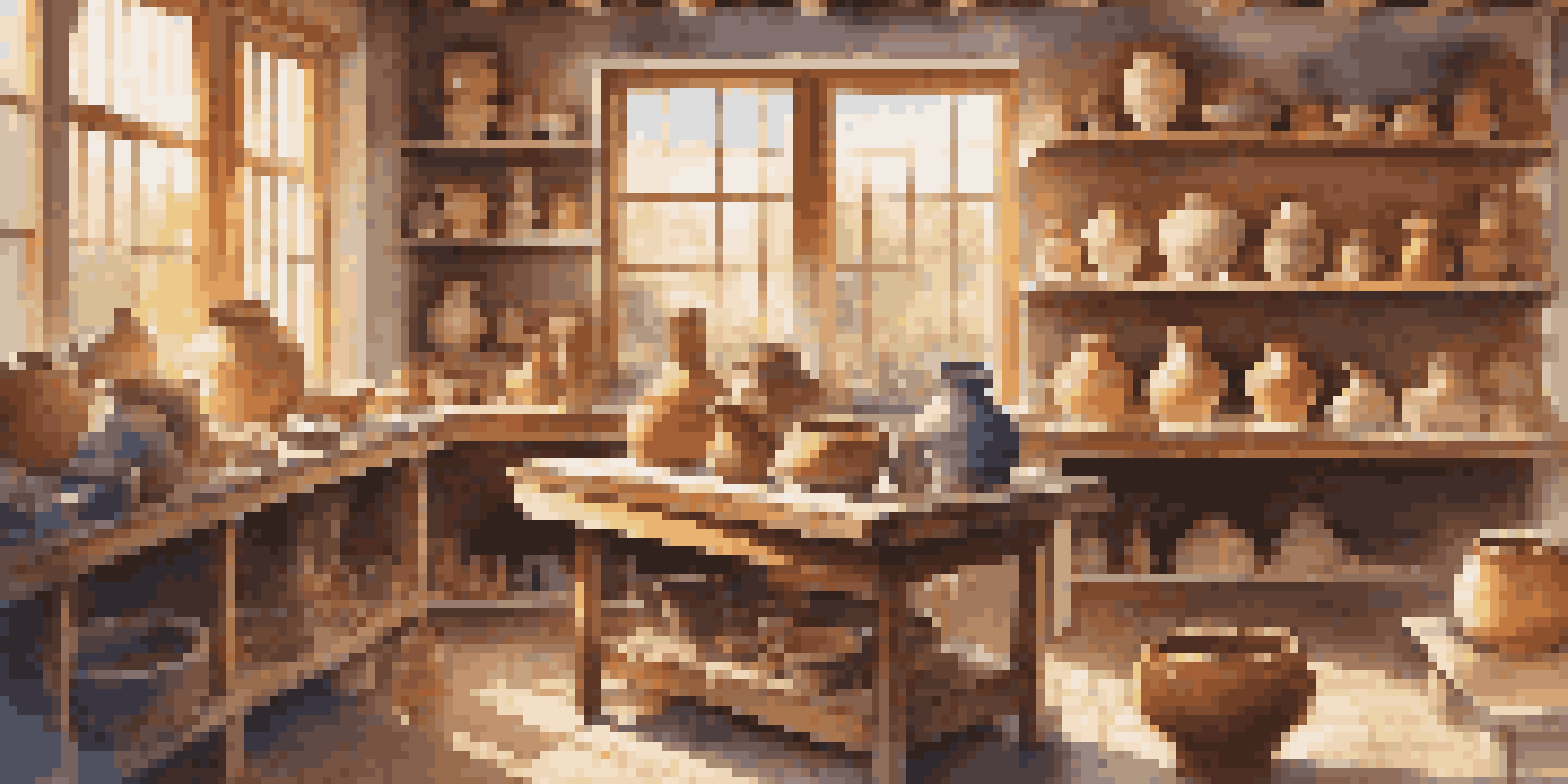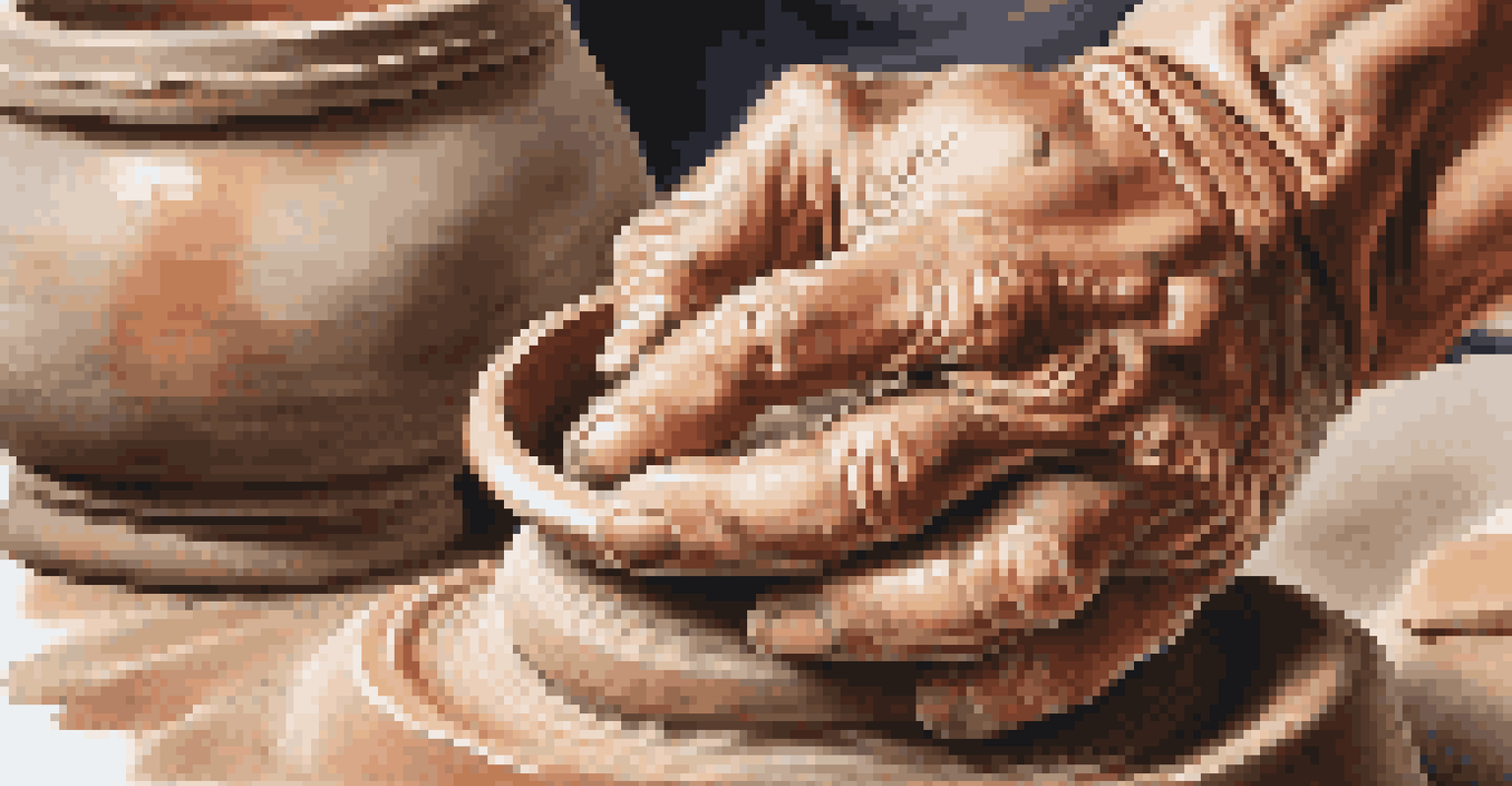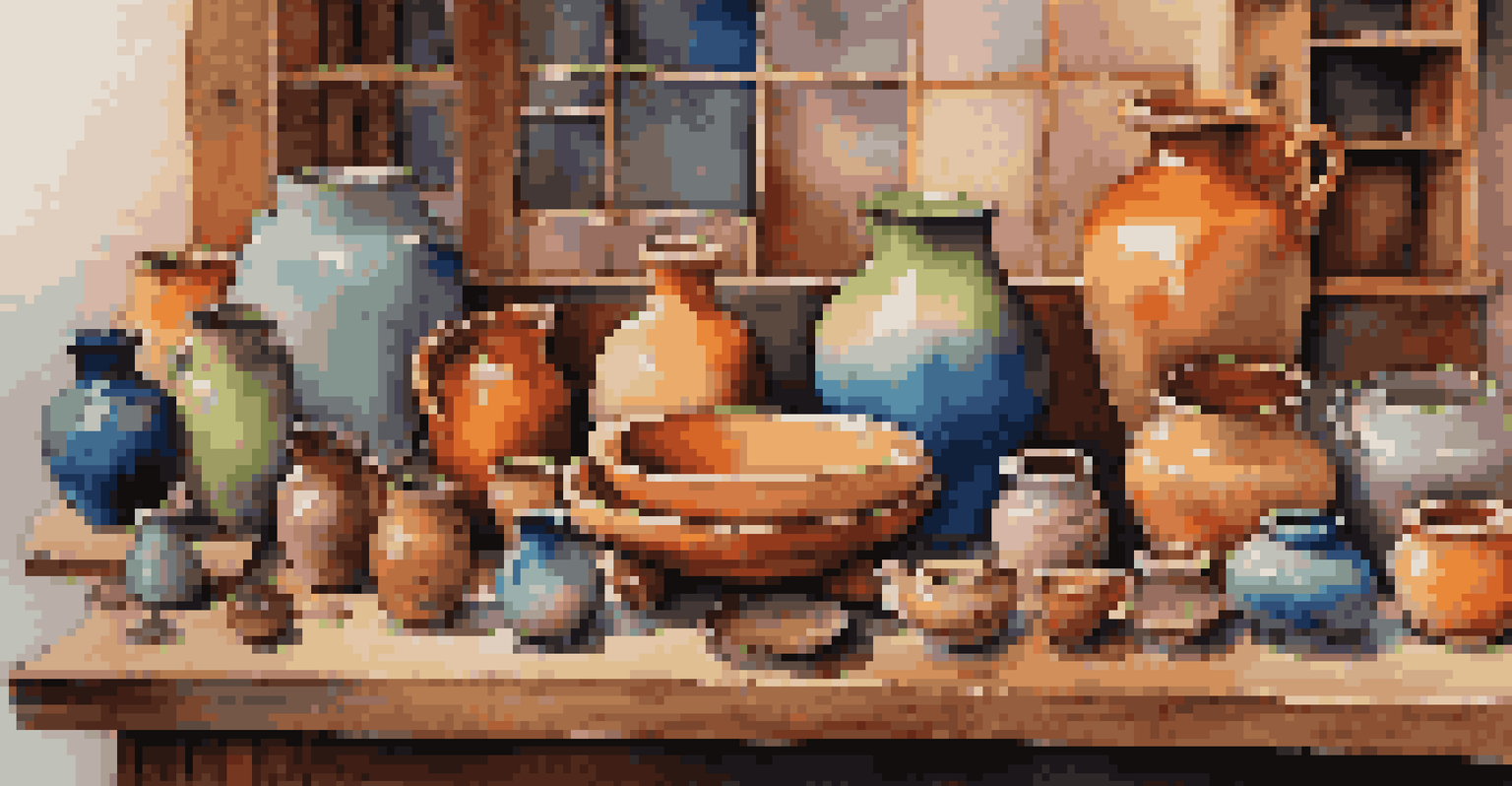Pottery Classes: What to Expect and How to Prepare

Understanding Pottery: An Introduction to the Art Form
Pottery is more than just shaping clay; it's a form of artistic expression that has been around for centuries. From functional dinnerware to intricate sculptures, the possibilities are endless. In pottery classes, you'll explore various techniques, including hand-building and wheel-throwing, allowing you to create unique pieces that reflect your personal style.
Pottery is the most human of all the arts. It’s the most honest, and it’s the one that connects you to the earth and the materials that you’re working with.
Many people find pottery to be a therapeutic activity, offering a creative outlet that can help relieve stress. As your hands work the clay, your mind can wander, leading to moments of inspiration and creativity. Plus, the satisfaction of transforming a lump of clay into a finished piece is incredibly rewarding.
Whether you're a complete beginner or have some experience, pottery classes cater to all skill levels. Expect to learn foundational techniques while also experimenting with your own ideas. This welcoming environment fosters growth and encourages you to embrace the learning process.
What to Expect on Your First Day of Pottery Class
Walking into your first pottery class can feel a bit daunting, but it’s important to remember that everyone is there to learn. Instructors typically start with an introduction, explaining the tools and materials you'll be using throughout the course. This initial overview helps set the stage for what lies ahead and eases any anxiety you may have.

You'll likely be provided with a workstation that includes a potter's wheel, clay, and essential tools. Your instructor will demonstrate basic techniques, guiding you through your first project. Don't worry if your first creation doesn't turn out perfectly; the learning journey is just as valuable as the end product.
Pottery Classes Foster Creativity
Pottery classes provide a supportive environment for all skill levels, encouraging personal expression and artistic growth.
As you work, you'll have the opportunity to connect with fellow classmates, fostering a sense of community. Sharing tips and exchanging ideas can enrich your experience and make the process even more enjoyable. Remember, everyone is there to support each other in this creative endeavor.
Essential Tools and Materials for Pottery Classes
Before stepping into your pottery class, it's helpful to know what tools and materials you'll be using. Most classes will provide the essential items, such as clay, tools for shaping, and a potter's wheel. However, some studios may encourage you to bring personal tools or specific types of clay if you have preferences.
The process of making pottery is a journey of self-discovery and personal expression.
Common tools include ribbers for smoothing, wire cutters for slicing, and sponge brushes for applying glazes. Familiarizing yourself with these tools can enhance your comfort level and boost your confidence. Your instructor will guide you in using them effectively, ensuring you feel supported throughout the process.
Additionally, many pottery studios have a variety of glazes available for your finished pieces. Experimenting with different colors and finishes can be one of the most exciting parts of pottery. Don't hesitate to ask your instructor for recommendations on which glazes work best with your creations!
Dress Code: What to Wear for Pottery Classes
When it comes to pottery classes, comfort and practicality are key. You'll want to wear clothes that you don't mind getting a little messy, as clay can be quite stubborn to remove. Opt for old t-shirts, aprons, or comfortable pants that allow you to move freely without restriction.
Closed-toe shoes are also a wise choice, as you'll be around heavy equipment and materials. It's essential to prioritize safety while still being able to enjoy the creative process. You may also want to bring a towel to wipe your hands and a water bottle to stay hydrated during class.
Key Techniques: Hand-Building & Wheel-Throwing
Students learn essential techniques like hand-building and wheel-throwing, allowing them to create unique pieces.
Some studios might have specific dress requirements, so it’s always a good idea to check with your instructor beforehand. Ultimately, the goal is to feel at ease so you can focus on unleashing your creativity without distractions.
Mastering Basic Techniques: Hand-Building and Wheel-Throwing
In your pottery class, you'll likely start with basic techniques such as hand-building and wheel-throwing. Hand-building involves creating pieces without the use of a wheel, allowing for a more tactile and organic approach. Techniques like pinching, coiling, and slab building give you the freedom to experiment with shapes and textures.
On the other hand, wheel-throwing is where the magic happens as you shape clay on a spinning wheel. This method can be mesmerizing, but it also requires practice to master. Your instructor will guide you through the process, helping you find your rhythm and develop your skills.
As you progress, you'll have the chance to combine both techniques, enabling you to create more complex pieces. Embracing both hand-building and wheel-throwing will give you a well-rounded foundation in pottery, expanding your creative horizons.
Caring for Your Creations: Glazing and Firing Basics
Once you've shaped your pottery, it's time to give it some personality through glazing. Glazes not only add color but also provide a protective finish to your pieces. In your class, you'll learn about different types of glazes and how to apply them effectively to achieve various effects.
After glazing, your creations will need to be fired in a kiln. Firing is a crucial step that transforms your clay into a durable ceramic piece. Your instructor will explain the firing process, including the different temperature ranges and how they affect the final outcome of your work.
Embrace the Artistic Journey
Understanding glazing and firing processes adds depth to pottery, inviting surprises that enhance the creative experience.
It's essential to understand that the glazing and firing processes can be unpredictable. Colors may change during firing, and imperfections can occur. Embrace these surprises as part of the artistic journey, and celebrate the unique qualities of each piece.
Finding Your Style: Personal Expression Through Pottery
One of the most rewarding aspects of pottery classes is discovering your unique style. As you experiment with different techniques and materials, you'll begin to see what resonates with you creatively. Allow yourself the freedom to explore various shapes, colors, and designs; this exploration can lead to unexpected and delightful outcomes.
Engaging with your classmates can also inspire your artistic journey. Sharing ideas and observing how others approach their projects can open your eyes to new possibilities. Don't be afraid to step out of your comfort zone and try something different; it's all part of the learning experience.

Remember, pottery is a personal expression of who you are. Embrace the process, and let your creativity shine through in each piece you create. Over time, you'll develop a signature style that reflects your personality and artistic voice.